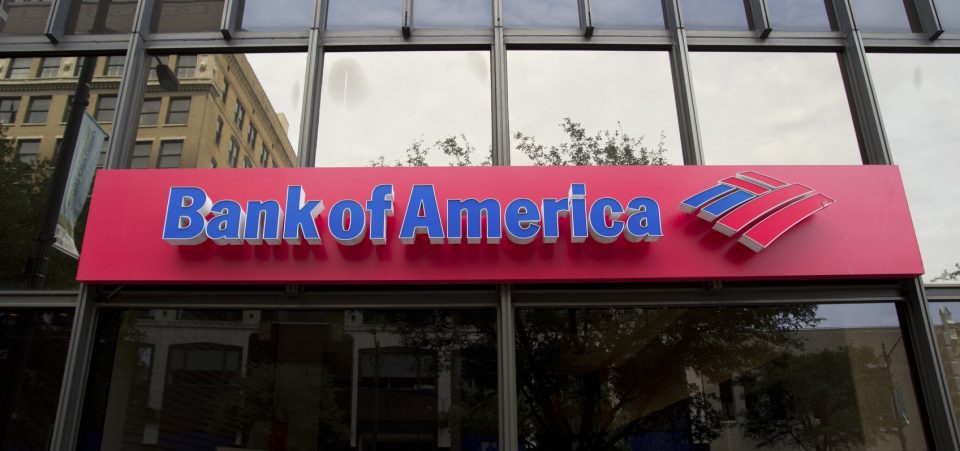Bank of America Sees Bull Market Surging Ahead in 2017
Bank of America Corp (NYSE:BAC) must be one of the last bastions of absurd optimism. It says that the long-in-the-tooth bull market still has a pulse; a strong one, it would seem.
According to Bank of America, the six-year bull market could send the S&P 500 to 2,300 by the middle of next year, just as stocks enter their strongest seasonal period. This is especially, Bank of America notes, if the index dips below 2,100, which it already has. (Source: “The Bull-Market Is Not Dead Yet: BofAML Sees S&P 500 Surging to 2,300 Points by 2017,” Financial Post, November 1, 2016.)
This could set up the kind of rally that investors saw earlier this year, when the S&P 500 climbed more than 10% from its January lows to a year-to-date high in August.
The S&P 500, which is currently at 2,090, is, according to Bank of America, better positioned for a seasonal rally from November to January (the best three-month period) and November to April (the best six-month period of the year).
Admittedly, stocks have been enjoying a mostly hurdle-free run since the S&P 500 bottomed in March 2009, advancing approximately 215%. But the run hasn’t been without a hiccup or two. After advancing approximately 30% in 2013 and 13% in 2014, the S&P 500 took a break in 2015, when it lost 0.7% of its value. So far in 2016, it’s up a princely 2.6%.
For the S&P 500 to hit the 2,300 level in mid-2017, it will need to increase 10%. Yes, the index climbed 10% earlier this year, but that was after the markets tanked. The 10% gain basically put the index back to where it was before the markets fell off a cliff in early January. It’s been a roller coaster ride since then.
Moreover, the S&P 500 is still trading near record levels. For the S&P 500 to hit 2,300, something will need to happen to make it move. Historically, that would have to be strong earnings and revenue growth. That’s not something investors have been seeing much of lately.
Investors Praying for Earnings Miracle in 2017
The S&P 500 has been in an earnings recession for the last five quarters. If it reports a decline in earnings in the third quarter, it will match the longest earnings recession on record. (Source: “Earnings Insight,” FactSet, October 28, 2016.)
That unwanted record may be in jeopardy. Roughly 60% of companies in the S&P 500 have reported their third-quarter results. The blended earnings growth rate for the S&P 500 is currently at 1.6%. If it does report growth in earnings in the third quarter, it will be the first time the S&P 500 has reported year-over-year earnings growth since the first quarter of 2015 (0.5%).
But for the S&P 500 to hit 2,300, it will have to climb 10%, and double-digit earnings growth over the next couple of quarters seems a bit of a stretch. This is especially when you consider that low interest rates and low inflation have really not translated into growth over the last eight years.
In the midst of weakening global growth, Bank of America, and much of Wall Street, is expecting the S&P 500 to experience the fastest earnings expansion since the bull market began in 2009. To get there, S&P 500 companies will need to increase profits by 13%. That hasn’t happened since 2011.
And it will be tough to justify, what with consumer confidence levels down, personal debt levels up, stalled jobs growth, and high underemployment. That is a bad combination for a country that gets over 70% of its gross domestic product (GDP) from consumer spending.
And we can’t look to the rest of the world to help boost S&P 500 earnings. The International Monetary Fund (IMF) downgraded its economic outlook once again for both the United States and global growth. U.S. expansion will come in at just 1.6% this year, from a previous forecast of 2.2%. Advanced economies will grow just 1.6% in 2016, down from an estimated 1.8%, and less than the 2.1% of 2015. (Source: “Subdued Demand: Symptoms and Remedies: October 2016,” International Monetary Fund, last accessed November 3, 2016.)
All of this is happening at a time when, according to the the Case Shiller P/E Ratio, the S&P 500 is overvalued by about 55%. With 13% earnings growth in the face of nosebleed valuations, weak GDP, and muted global demand, the situation does not bode well for the S&P 500 to hit 2,300 in mid-2017. (Source: “Online Data Robert Shiller,” Yale University Department of Economics, last accessed November 3, 2016.)
Having said that, there’s no logical reason for the index to even be where it is today. The same illogical investor pressure could send the S&P 500 to 2,300 in 2017. Eventually, valuations and fundamentals will need to run in step. It will get ugly when that happens.






